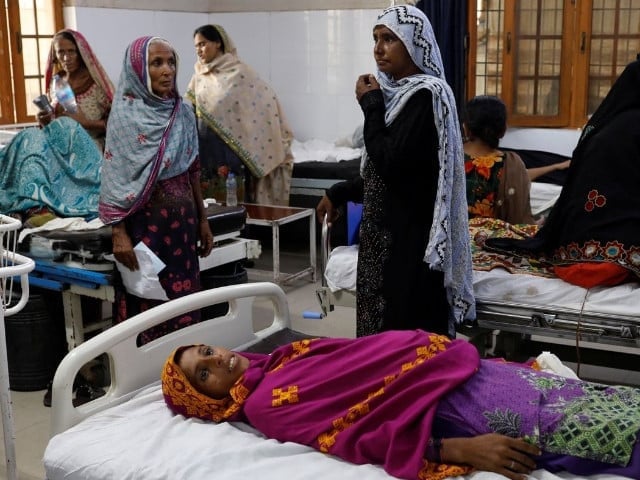Fewer than one in three women in Pakistan has the ability to make decisions about their sexual and reproductive health
islamabad:
Pakistan is on track to eliminate preventable maternal deaths for the first time in 122 years if current trends continue.
Despite significant global advances in sexual and reproductive health and rights over the past three decades, millions of women still lack access to these essential services.
The United Nations Population Fund (UNFPA) releases its annual report on the state of world population in 2024, titled “Interwoven threads of life, threads of hope: Ending inequalities in sexual and reproductive health and rights.” did.
The report highlights the need for a comprehensive approach to achieving progress and acknowledges that discrimination continues to impede widespread improvements in the sexual and reproductive health of women and girls in many parts of the world. I’m emphasizing.
The report finds that too many people around the world are at risk from structural inequalities, and it is estimated that more than half of preventable maternal deaths occur in countries experiencing humanitarian crises and conflict. This is a wake-up call for people to understand that nearly 500 people are dying every day.
2024 marks the 30th anniversary of the International Conference on Population and Development (ICPD) in Cairo. This is a landmark moment when 179 governments committed to putting sexual and reproductive health and rights at the heart of sustainable development. But that progress is at risk.
Read: Mother Nation
Millions of women and girls remain far behind, with progress on critical interventions slowing or stalling. 800 women die in childbirth every day, unchanged from 2016, and nearly 1 in 10 women are unable to make their own decisions about contraception.
Less than one in three women in Pakistan has the ability to make decisions about their sexual and reproductive health. Women with disabilities are up to 10 times more likely to experience gender-based violence than women without disabilities.
Speaking at the report’s media launch in Pakistan, UNFPA Country Representative Dr. Ruay Shabane said Pakistan is a country with a predominantly young population, and that all young people should have the opportunity to fulfill their potential. He emphasized that it must be done.
He pointed out that as more than 50% of Pakistan’s population is under the age of 19, the country will miss major opportunities and face high risks if young people are not able to exercise their rights to health, education and welfare. did.
Read: Why is KP’s maternal mortality rate so high?
“Women and girls are a missed opportunity for Pakistan’s economy and social fabric. This fact reinforces the findings of the SWOP report, which highlighted that most women still lack access to health facilities due to structural inequalities. “It’s telling,” he said.
Some inequalities still exist
The evidence outlined in the report shows that too many women and girls lack access to contraceptives, safe childbirth services, respectful obstetric care, and other important sexual and reproductive health services. This shows the worrying reality that there is no such thing.
Universal health coverage (UHC) remains disappointingly low in Pakistan at just 21%. A woman dies from pregnancy complications every 50 minutes in Pakistan. Women in rural areas are less likely to have access to timely medical care, and unfortunately, medical progress is lagging in Pakistan.
If this pace continues, Pakistan will achieve zero maternal mortality in 122 years and meet its family planning needs in 93 years.
The report highlights the importance of tailoring programs to local community needs, rather than large-scale, one-size-fits-all approaches, and empowering women and girls to think of and implement innovative solutions. I’m emphasizing.
And if the world invested an additional $79 billion in low- and middle-income countries by 2030, 400 million unplanned pregnancies would be avoided, 1 million lives saved, and $660 billion would be saved. It is estimated that there will be economic effects.

